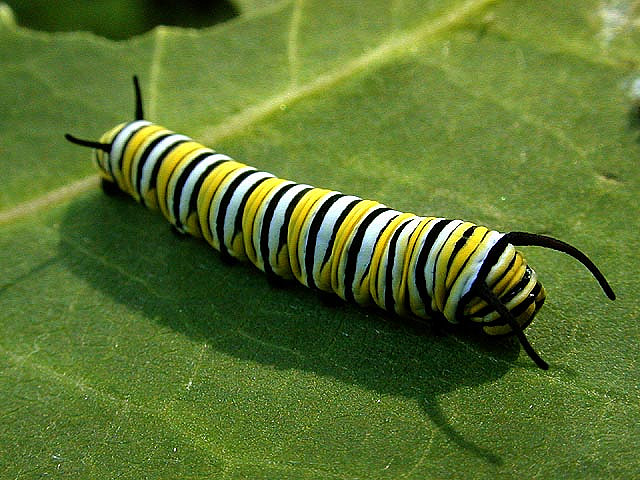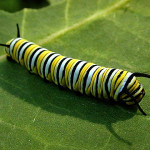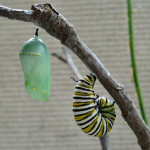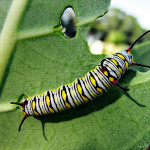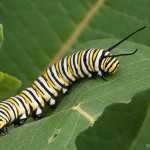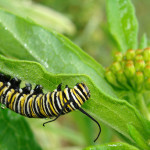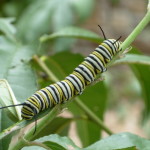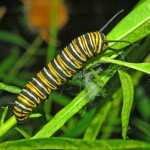8 Monarch Butterfly Caterpillar
Sponsored link:
We tend to admire butterfly wings for their captivating appeal. Our neglect in ignoring other remarkable facts about these wings is as a result fairly excusable. but wouldn't you like to know more? Here are our top ten (well, maybe more) facts about 8 Monarch Butterfly Caterpillar that you will be excited to learn.
Butterflies Have Scaled Wings
The scientific name for the butterfly/moth family is Lepidoptera. This word is derived from Greek roots suggesting "scale wings." For scientists, the most evident feature that separates butterflies and moths from other insects is their scaled wings. While we may not observe this promptly, closer assessment of a butterfly reveals the fact that their wings are made from tiny scales that are actually bulbous, modified feathers. The pigments of the scales on their wings come either from chemical pigments such as melanin or from plants and waste that build up during metamorphosis. If you check out macro photography pictures of these scales, you can see that the scales differ not only in color, they differ in shape. Some butterflies appear to have a "dusty" texture. When you check out macro photography shots of these butterflies, you will see that the round shaped scales actually look like an old, securely woven carpet! Other butterflies appear to have a glossy or metallic texture. When you check out macro photography shots of these butterflies, you will observe that the scales are relatively flat with crisp, overlapping edges. Depending on the spacing between these flat, overlapping scales, reflective light waves interface to the degree that some wavelengths are cancelled out while others are enhanced - like the patterns on a soap bubble. This is why the popular morpho butterflies have a metallic, iridescent appearance.
For a moment, let's forget about the shape and coloring of these scales: there is something intriguing that we discover by massaging them all off: if the scales are removed, the wing that is left appears clear and slightly wrinkly - type of like Saran Wrap! Some species of butterflies are in fact, scale-less. Enthusiasts call them glass wing butterflies. Although these butterflies are interesting to check out, we have to wonder whether or not having no scales may be a slight disadvantage considering that the scales of butterfly wings are flexible and self-cleaning! Grooming may as a result be slightly more complicated for glass wings! One last fact about the scales on butterfly wings: they commonly change color - or perhaps color - when wet. The species Papilio Ulysses Ulysses is particularly lovely to lay eyes on when it is wet: rather than its popular, lively blue, the wings appear to be a teal-ish green color when wet. Regrettably, we rarely get to observe this detail in nature due to the fact that butterflies hide from the rain - which leads us to our next round of intriguing facts ...
Wet Wings
When emerging from the chrysalis, a butterfly's wings are soft and flexible. If the butterfly does not extend the wings soon enough or wide enough, they will harden with folds that will cripple the butterfly and keep it from being able to fly the rest of its life. The drying process only takes about an hour. Each time a butterfly's wings get significantly wet, it runs the risk of having its wings spoiled to some degree. This is one reason you will see butterflies on a leaf or branch flapping their wings and sitting in the sun. They may not be trying to bring in any kind of attention - they are making every effort to keep their wings healthy and strong. There is another reason you may observe this behavior though: butterflies need sunlight in order to fly. Their bodies need to maintain a temperature of about 53 degrees Fahrenheit or 30 degrees Celsius or their flying muscles will not function appropriately - slow and sluggish, they are prone to predator attack.
Eyespots & Tails
The majority of butterfly wings have eyespots or tails. Eyespots secure butterflies due to the fact that birds will attack the eyespot first. Some eyespots are hidden from view until the forewing is pushed forward so that red eyes appear and surprise the predator long enough to make an escape. For similar reasons, the majority of species of butterflies and moths have charming tails. While we admire these tails for their appeal, birds are not so discriminating - to them, these tails look like the long neck of a bug. Due to the fact that necks represent a prone portion of the anatomy of any kind of creature, this is an evident spot for birds to attack. Thus, even a successful attack on an eyespot or on a butterfly's tail will not be fatal and considering that butterflies can fly with up to 70 % of their wings missing, a detached eyespot or tail will allow the butterfly to get away to safety.
Feel free to download the Stock photo under 8 Monarch Butterfly Caterpillar content for free. Suport us by sharing this Stock photo to your family.
640 x 480 330 x 220 640 x 480 150 x 150
Download HereSponsored link:
